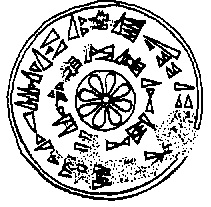Alluwamna | |
|---|---|
 Personal seal of King Alluwamna | |
| Predecessor | Tahurwaili [1] or Telipinu [2] |
| Successor | Hantili II |
| Spouse | Harapšeki |
| Children | Hantili II [3] |
Alluwamna was a king of the Hittites (Middle Kingdom) in the 15th century BC. He might be a successor of Telipinu as his son-in-law, [4] [5] after the reign of Tahurwaili. [1]